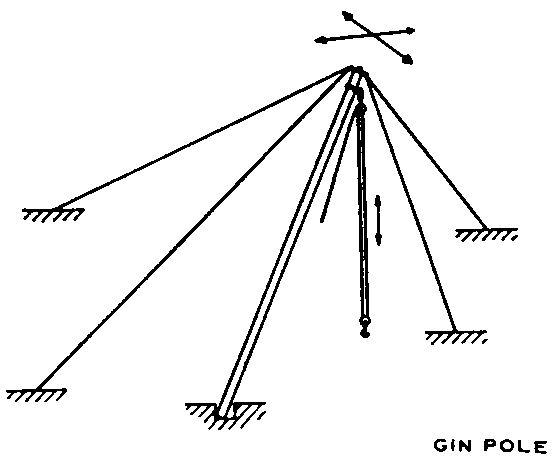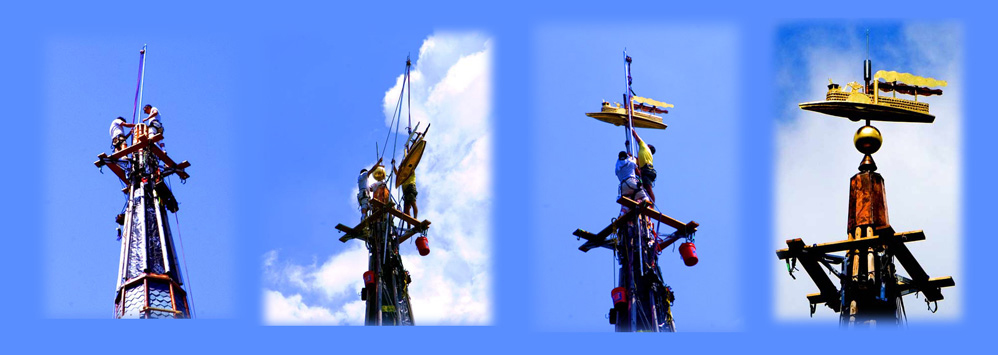Jin-pole on:
[Wikipedia]
[Google]
[Amazon]
 A gin pole is a supported pole that uses a pulley or
A gin pole is a supported pole that uses a pulley or  The gin pole is derived from a
The gin pole is derived from a
Notes & drawingsgin pole failure leads to lawsuit april 15, 1948 in philadelphia
Tools Cranes (machines) Lifting equipment {{architecture-stub
 A gin pole is a supported pole that uses a pulley or
A gin pole is a supported pole that uses a pulley or block and tackle
A block and tackle or only tackle is a system of two or more pulleys with a rope or cable threaded between them, usually used to lift heavy loads.
The pulleys are assembled to form blocks and then blocks are paired so that one is fixed and on ...
on its upper end to lift loads. The lower end is braced or set in a shallow hole and positioned so the upper end lies above the object to be lifted. The pole (also known as a ''mast'', ''boom'', or ''spar'') is secured with three or more guy-wire
A guy-wire, guy-line, guy-rope, or stay, also called simply a guy, is a tensioned cable designed to add stability to a free-standing structure. They are used commonly for ship masts, radio masts, wind turbines, utility poles, and tents. A ...
s. These are manipulated to move the load laterally, with up and down controlled by the pulley or block. In tower construction, a gin pole can also be “jumped” up the completed sections of a tower to lift the higher sections into place.
 The gin pole is derived from a
The gin pole is derived from a gyn
A gyn is an improvised three legged lifting device used on sailing ships. It provides more stability than a derrick or sheers, and requires no rigging for support. Without additional support, however, it can only be used for lifting things dire ...
, and considered a form of derrick
A derrick is a lifting device composed at minimum of one guyed mast, as in a gin pole, which may be articulated over a load by adjusting its guys. Most derricks have at least two components, either a guyed mast or self-supporting tower, and ...
, called a standing derrick or pole derrick, distinguished from sheers
Shear legs, also known as sheers, shears, or sheer legs, are a form of two-legged lifting device. Shear legs may be permanent, formed of a solid A-frame and supports, as commonly seen on land and the floating sheerleg, or temporary, as aboard a ...
(or ''shear legs'') by having a single boom rather than a two-legged one.
Gin poles are also used to raise loads above structures too tall to reach with a crane, such as placing an antenna on top of a tower/steeple, and to lift segments of a tower on top of one-another during erection. When used to create a segmented tower, the gin pole can be detached, raised, and re-attached to the just-completed segment in order to lift the next. This process of ''jumping'' is repeated until the topmost portion of the tower is completed. They can also hold a person if strong enough (thus opening stage uses, such as in magic shows).
Gin poles are mounted on trucks as a primitive form of mobile crane, used for lifting and relocating loads, and salvage operations in lieu of a more sophisticated wrecker.
References
External links
*Notes & drawings
Tools Cranes (machines) Lifting equipment {{architecture-stub